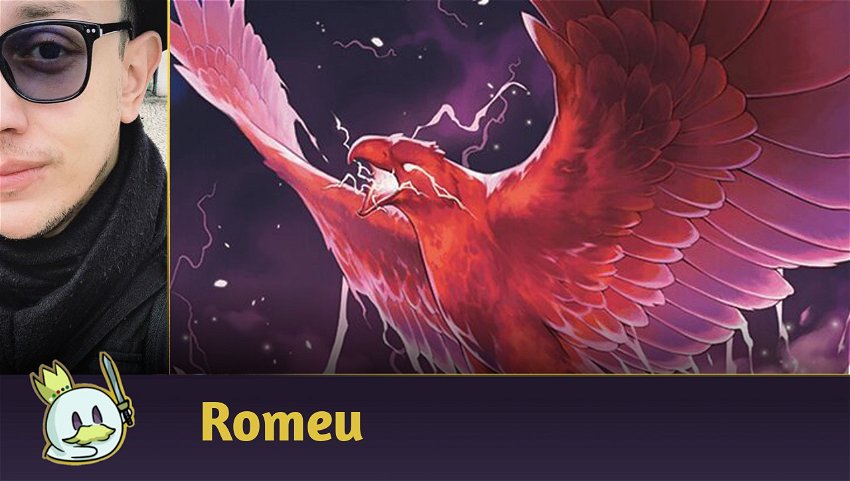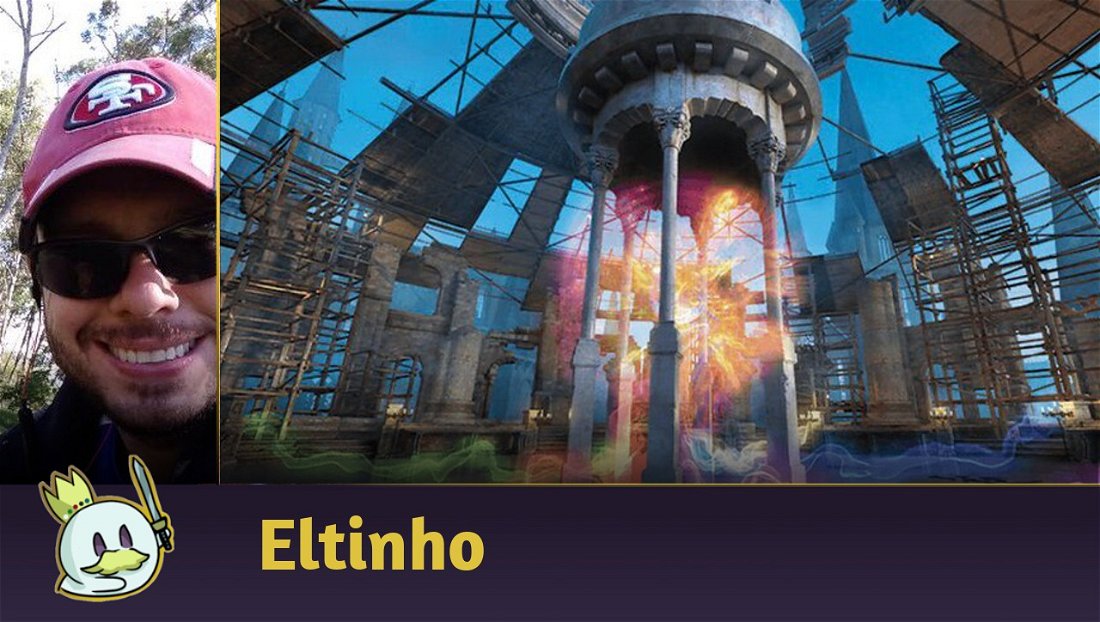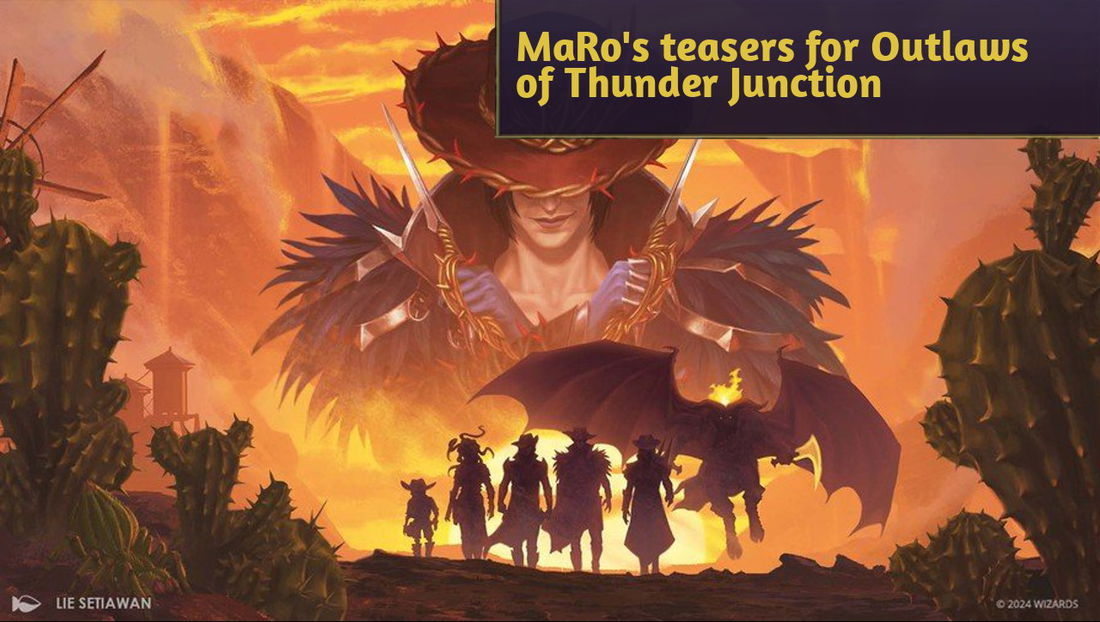Pioneer continues to prove itself as a stable format. Between one new thing and another with each set, its Metagame goes through some changes, but the pillars of the best decks remain in the competitive structure for a long time.
This does not mean that their positions do not change as new archetypes are introduced into the environment: the recent rise of decks such as Rakdos Vampires and Abzan Amalia are proof of the natural evolution that each release provides.
In this article, we guide you to a more comprehensive overview of Pioneer, with a Tier List of the main archetypes on the competitive scene in 2024!
Ad
Tier 1
Decks in Tier 1 are the most played archetypes in the format and with the greatest representation and results in Challenges and other major events. They normally dictate the rules of which other competitors need to adapt to have a chance of making a Top 8 or winning a tournament.
Izzet Phoenix
Considered the most reliable deck in Pioneer today, Izzet Phoenix returned to the top after receiving good supports with Picklock Prankster and Sleight of Hand, giving it more consistency in its game plan and filling the gap left by Expressive Iteration.

Its strategy consists of putting as many Arclight Phoenix in your graveyard as possible and sequencing three or more spells in one turn to return them to the battlefield, creating a fast and very resilient clock against most removals.
To complement this strategy, Izzet Phoenix has the largest amount of filtering and card selection in the format, with cantrips like Consider and effects that benefit from them, like Ledger Shredder and Treasure Cruise.
Added to the efficient use of removals, complementary threats and its ability to adapt against any Metagame, Izzet Phoenix stands out as the current best deck in the format, and a great choice for any player looking to be rewarded for good learning of its strategy.
Rakdos Vampires
Rakdos Vampires was a pleasant addition from Pro Tour Murders at Karlov Manor and the event's winning archetype in the hands of Seth Manfield.

It consists of a hybrid between Midrange and Combo, which runs Sorin, Imperious Bloodlord's interaction with Vampires to create a solid game plan, capable of maintaining constant attrition during the game, or winning it quickly with Vein Ripper, a hard-to-kill threat that rewards the deck for executing its game plan.
This combo is fused with key Rakdos Midrange cards in the format such as Thoughtseize, Fatal Push, and Fable of the Mirror-Breaker to establish one of the best and most consistent options for the format today, ideal for players looking for a light touch of unfair strategy around a list with many efficient cards.
Azorius Control
As classic as the format itself and even older than it, Azorius Control gained more notoriety in the Metagame after receiving No More Lies as an efficient counterspell for a low cost, and whose exile clause improved its game against Izzet Phoenix.

Its strategy consists of holding the match and depleting your opponent's resources to stabilize with sweepers and Planeswalkers, such as Teferi, Hero of Dominaria, accumulating rivers of card advantage while preventing your opponent from continuing with their game plan until reaching the point where your victory is inevitable.
Ad
Azorius Control is excellent for players who seek a more reactive strategy and prefer to remain calm while playing. However, due to the longer duration of matches, it is necessary to pay attention to the clock for each round to avoid draws or, in Magic Online, defeats due to time-out.
Lotus Combo
Lotus Combo is the main pure Combo archetype in Pioneer and the closest we have to a completely unfair and difficult to interact with strategy.
Its combo revolves around Lotus Field, a land so challenging to remove that the Magic design team had to create a rules loophole with Krenko's Buzzcrusher to provide a way to interact with it, while its combo is fast enough to end the game as early as the third turn.

With a copy of Lotus Field in play and, ideally, Thespian's Stage to copy it, its controller can use cards like Hidden Strings and Pore Over the Pages to generate huge amounts of mana and use it to cast Emergent Ultimatum, looking for a combination of cards to win, focusing on casting Omniscience or other spells for free.
Once you have enough mana and/or Omniscience on the battlefield, there are a dozen options available to win, either with Approach of the Second Sun, or a combination of Lier, Disciple of the Drowned, Bala Ged Recovery and Chandra, Hope's Beacon, or with a gigantic Lair of the Hydra, or just racking up absurd value with Zacama, Primal Calamity and Atraxa, Grand Unifier.
The Lotus Combo is one of the most complex and difficult decks to pilot in Pioneer, as its controller needs to understand the timing of each move and which line they can follow to win, making it ideal for players who seek a high level of learning to the point of dedicating themselves to a single archetype for a long time.
Abzan Amalia
Considered one of the most controversial decks in the current Metagame, Abzan Amalia is a toolbox Aggro-Combo aimed at combining Amalia Benavides Aguirre with Wildgrowth Walker to finish the game.

The combo consists of having both creatures in play and triggering any instance of lifegain or Explore. If you do, Amalia's ability will trigger, causing Wildgrowth Walker to also trigger and its controller to gain life, triggering Amalia's ability again and starting a loop.
In the ideal scenario, this loop ends when Amalia's power reaches 20, as she will destroy all other creatures and will be unimpeded to attack, but, in practice, there are scenarios where players can force a draw by giving Indestructible to Wildgrowth Walker, making this combo one of the most problematic for competitive events.
To find the combo and establish a decent alternative plan, Abzan Amalia relies on Collected Company and Chord of Calling to search for the necessary piece at the ideal moment, allowing a “go wide” strategy with high potential of survival against other aggressive decks due to the absurd amount of life that your combo provides.
Ad
It is ideal for players who like archetypes with many one-ofs without losing consistency and/or who enjoy the concept of an aggressive list capable of winning the match “for free” in some games.
Tier 1.5
Decks in Tier 1.5 are viable options in the competitive environment and produce results in the format's tournaments and Leagues. They don't precisely dictate trends, but tend to function as a direct response to them, or are consistent in staying in the Pioneer despite no longer being at the top of the Metagame.
Rakdos Midrange
Considered the best deck for almost a year, Rakdos Midrange suffered a decline with the rise of the newest variant in these colors with Vein Ripper and Sorin, Imperious Bloodlord, but it remains one of a viable strategy in the Metagame and benefits from the absence of compromises for its strategy to work.

This archetype exchanges the explosion and combo possibilities of Vampires for a more consistent strategy, focused on one-for-one trades until the opponent's resources are exhausted while accumulating their own or keeping bigger threats on the board, forcing responses in a few turns so as not to take over the game.
It is ideal for those looking for a consistent strategy, aimed at attrition games that reward making the right decisions at the right time, and prefer a selection of better cards on their own than relying on the variant's type synergies with vampires.
Boros Convoke
Despite its absence in Tier 1, the most aggressive decks are present in Pioneer and Boros Convoke is their main representative in the “go wide” route, that is, extending the number of threats on the board and increasing their power.

Based on the interaction between Thraben Inspector and other artifact producers alongside Gleeful Demolition to have four creatures in play as early as the second turn, Boros Convoke uses them to cast Knight-Errant of Eos and find Imodane's Recruiter and go for a lethal attack the next turn, or Venerated Loxodon to expand your board position and transform creatures into threats.
In addition to them, the deck today has an alternative “go big” plan through Warden of the Inner Sky, whose ability interacts with the creatures on the list to grow fast in two turns while filtering the top.
Boros Convoke is ideal for players who prefer explosive, fast archetypes with a lot of synergy between their cards. It is the main representative of “weenie” lists in the format and can win any game in which opponents fail to interact with it and/or take too long to make impactful plays.
Boros Heroic
On the other side of the Aggro spectrum, we have Boros Heroic as the main representative of “go big” decks - archetypes that seek to win the game with just one or two giant threats through increasing their power and means of protecting them.
Ad

Creatures like Favored Hoplite, Monastery Swiftspear, and Tenth District Legionnaire quickly benefit from the amount of cheap spells available to Boros Heroic, and the addition of Ancestral Anger and Monstrous Rage gave the archetype what it needed to make it one of the fastest strategies for winning non-interactive games.
Today, it is an excellent Meta call for environments where we have more combos and less attrition, being able to close the match faster than Lotus Field can perform its loops or even before Abzan Amalia gains absurd amounts of life, making it an ideal choice for players who prefer to end games early while being rewarded for making the right decisions with their protections and pumps.
Niv to Light
With a notable focus on attrition and card advantage matches, Niv to Light is the main representative of the “go tall” in Pioneer today, archetypes that seek to play “over” the Midranges and accumulate an absurd amount of value with one or two cards.

Its list is made up of a five-color toolbox with multicolored cards to be found with Niv-Mizzet Reborn or cast with Bring to Light at opportune moments, making it extremely flexible if you manage to hold the opponent's aggression in the first turns.
Niv to Light also relies on Omnath, Locus of Creation to gain breath and extra mana, in addition to interacting with Up the Beanstalk with its higher-cost spells, making it prevail in games where opponents seek to make one-for-one trades, after all, a discard like Thoughtseize has its effect minimized when your opponent is drawing three or more cards in a single turn.
Waste Not
Waste Not is a black-based control deck aimed at depleting both players' resources. Its plan is to discard the opponent's hand while extracting value from discarded cards with Waste Not or Aclazotz, Deepest Betrayal.

This archetype doesn't mind losing resources, as it relies on permanents and cheap removals to maintain its pressure on the board, whether with Liliana of the Veil keeping the scarcity, or with Hive of the Eye -Tyrant pressuring them while they don't find an answer, in addition to using Sheoldred, the Apocalypse and the interaction of Geier Reach Sanitarium with her and Waste Not to create a dangerous combination of effects every turn.
Waste Not's biggest weakness, obviously, is the opponent having a better topdeck or managing to generate more value with their draws than you can get from discards, in addition to having notorious problems with aggressive and/or very redundant decks.
Tier 2
Tier 2 decks appear on the competitive scene, produce results, but are unlikely to be found in the Top 8 of major events. They are viable options for local events and, in some cases, they are emerging strategies in the format.
Ad
Rakdos Sacrifice
Rakdos Sacrifice is a well-known archetype in Pioneer since Throne of Eldraine and has remained present in the Metagame as the main predator of the format's Aggro decks. Its combination of Witch’s Oven, Cauldron Familiar and Mayhem Devil is enough to “lock” go wide archetypes from ascending.
Today, it has fallen into decline because Abzan Amalia is already a huge limiter for any Aggro, and its matchup against other strategies in the Metagame is not enough to put it in the spotlight.
Izzet Ensoul
Izzet Ensoul is the best variant in the Ensoul Artifact lists on Pioneer today, and the only one to produce tournament results in the current Metagame.
Its combination of efficient threats with the interaction between Inti, Seneschal of the Sun and the recently unbanned Smuggler’s Copter, in addition to the combination of Gleeful Demolition with Reckless Bushwhacker, transform this version into an Aggro capable of attacking in multiple ways while putting pressure on the opponent in a quick game, threatening to end it with Shrapnel Blast as soon as they reach its threshold.
Azorius Spirits
Azorius Spirits has seen a recent rise in the competitive Metagame as players have adopted Smuggler's Copter and Wedding Announcement to give the archetype greater attrition power at the expense of cheaper Tempo plays, placing it in a rather favorable position right now.
Its strategy consists of taking advantage of synergies between Spirits to dictate the game's pacing, always playing between its own turns and the opponent's to maintain the resource parity and take advantage of threats protected by Rattlechains, or to counter key spells with Spell Queller.
Izzet / Jeskai Creativity
Indomitable Creativity has come a long way in competitive Magic in 2023 and has become one of the best combo cards out there in Modern and Pioneer, where its most common target has been Atraxa, Grand Unifier.
The deck consists of a Combo-Control aimed at using artifact tokens and/or creatures to get one or two bombs directly onto the battlefield with Indomitable Creativity - Another option in this combo, for example, is to use Worldspine Wurm and Xenagos, God of Revels to attack with a 30/30 creature with Trample that, if it dies, puts three 5/5 tokens into play.
The rest of the list is made up of answers such as removals and counterspells, or meants to obtain value and even win without needing the combo, such as Teferi, Hero of Dominaria and The Wandering Emperor.
Quintorius Combo
Still on the combo spectrum, Quintorius Kand uses the Discover mechanic to search for Spark Double or Clever Impersonator to copy it and activate its ability again. Due to his passive, Quintorius deals damage to the opponent whenever a spell is played from exile, and each copy of Quintorius will trigger another ability, creating a snowball that will lead to the opponent's defeat.
Ad
Added to a shell composed exclusively of closing the combo and holding the game until then, the Quintorius Combo punishes players who are unable to interact with it or who are not quick enough to finish the game, but faces problems in establishing their game plan in the face of counterspells and some removals.
Tier 3
Tier 3 covers decks that produce results in Leagues and appear in the Top 32 of Challenges, but rarely make it into the Top 8. They are viable options for weekly events and local stores, or as a Meta Call for more specific environments.
Mono Black Midrange
Mono Black Midrange follows the same strategy as Rakdos Midrange of exhausting your opponent's resources and establishing a board and card advantage, but gives up a second color in favor of the efficient use of utility lands and the possibility of including Invoke Despair as a means of extracting a three-for-one from the opponent.
Gruul Aggro
Gruul Aggro, or Gruul Vehicles, is an aggressive deck that accelerates its curve through mana dorks to play more impactful creatures a turn earlier, such as Bonecrusher Giant and Reckless Stormseeker. It also complements this plan with a combination of powerful vehicles, managing to take over the game with Esika’s Chariot or punish the opponent with Skysovereign, Consul Flagship.
The natural inclusion of The Akroan War in their lists and the use of mana dorks make Gruul Aggro have a certain advantage against Rakdos Vampires if they rely too much on the plan to cheat Vein Ripper with Sorin, Imperious Bloodlord, making this a good Meta Call in the format today.
Abzan Greasefang
Abzan Greasefang is the most recent iteration of the combo between Greasefang, Okiba Boss and Parhelion II, where we use it to reanimate and crew the vehicle, attacking for 13 damage in a turn and leaving two 4/4 Angel tokens to close the lethal damage the next turn.
This version complements the combo with attrition and value through efficient discards, removals and Esika's Chariot to dominate the battlefield, as well as increasing the speed of and finding the combo via Grisly Salvage and Satyr Wayfinder.
Five-Color Goodstuff
Five Color Goodstuff foregoes the interaction of Niv-Mizzet Reborn with Bring to Light to focus more on the toolbox side of its key card, using it to seek any necessary answer in a due momentum while capitalizing on Up the Beanstalk to generate more value.
Its main difference and possible advantage compared to Niv to Light is the possibility of using more monocolored or even colorless cards, increasing the available targets for each matchup.
Dimir Control
Gabriel Nassif's notorious result in the Swiss rounds of the Pro Tour Murders at Karlov Manor brought Dimir Control back into the Pioneer spotlight.
Its main advantage compared to the Azorius variant is the insertion of Thoughtseize and other black cards with greater ease in dealing with specific situations, but its stance is much more reactive and has Torrential Gearhulk and Hall of Storm Giants as the main winconditions, in addition to losing part of the scope that makes the Azorius variant more popular.
Ad
Conclusion
That's all for today!
If you have any questions or suggestions, feel free to leave a comment!
Thanks for reading!








— Comments0
Be the first to comment